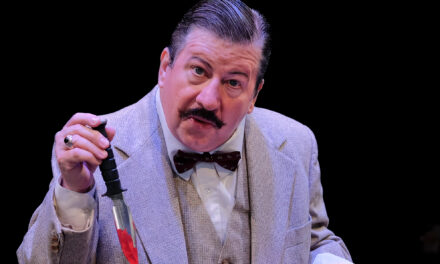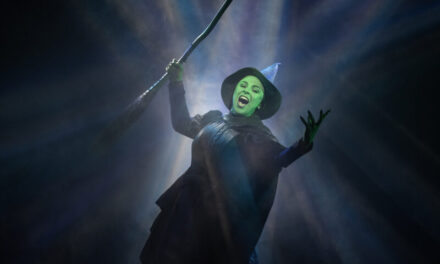Interviewed by Rachel White
Entire contents are copyright ©2012 Rachel White. All rights reserved.
Published in conjunction with Pure Uncut Candy magazine.
The Tim Faulkner Gallery has changed locations from a small gallery in Nulu to a larger complex in Butchertown; this change seems like a good one. Of course, there are still the rooms filled with wall-to-wall art, but there are also artists living and working within the complex. The upstairs houses the art gallery with its colorful walls, spilling out paintings and sculptures. Downstairs includes several small arts-related businesses, including the art magazine Pure Uncut Candy, and Matt Anthony’s Record Shop. Other stores and artist studios inhabit the rest of the space. The situation makes for a creative community, like a small arts colony in Butchertown. Working within the complex is DJ and artist Matt Anthony, the owner of Matt Anthony’s Record Shop. I sat down with Matt in his record store, which Matt thinks of as an art project in itself. It is, of course, filled with records; but his paintings and drawings decorate the walls of the store.
Arts-Louisville: How did you get your start as an artist and a DJ?
Matt Anthony: I was a military brat ,and when I was a kid (my family) was stationed in Italy. They had one American store on the base and they’d get one new CD of each new artist, so I would make sure that I was the first one to get it. I had all the music on the base, so I started DJ-ing.
| By Matt Anthony. |
AL: What about drawing?
MA: I moved around a ton as a kid and there were lots of times where I wouldn’t know a soul. I spent a lot of time by myself drawing. I really got into graffiti as a kid too, just being so much into hip-hop. That was the first art movement that I identified with. I was also into comic books. I would copy comic book pages and eventually I could copy it just like the artist in the comic book, which made me realize I needed to figure out my style. When I got older and went to art school, I discovered Van Gogh and all the classical guys like Da Vinci.
AL: What musical artists attracted you?
MA: It was the late eighties, so DJ Premier, De La Soul, A Tribe Called Quest, all of the arty intelligent hip-hop.
|
AL: Did traveling around affect your style?
MA: Because we traveled around so much, I never had any blind loyalties to anything. I didn’t have to like East Coast rap; I wasn’t from the country, so I didn’t have to like country music. To quote George Michael, it let me “listen without prejudice.” My radio show showcases everything from around the world. I travel a lot too, and pick up music wherever I travel.
AL: After gathering everything you could, you went to a formal art school in San Francisco. How was that?
MA: I loved art school. My skills just skyrocketed there. Of the two schools of art, the abstract (I’m going to express my feelings); and the other side, which is technique. I’m definitely more of a technique guy. I give it up to Thomas Kinkaid, even though his stuff tends to be pretty bland. The best artists give both. In school, I was learning sculpting, and then I discovered oils and oils became my love. If I’m going to paint, I paint with oils.
|
AL: Did that experience change your style?
MA: Yeah, I had all these ideas that I wanted to accomplish. And once I got the techniques behind me, I realized that I’m only limited by my mind. My ideas come from wacky, wacky places.
AL: What kind of wacky places?
MA: My last big piece was a Mayan Oppression piece. I was a history major, so I’m big into history and I just got absorbed into Mayan culture. That’s when I decided to do a Mayan pinup painting. I’m doing a whole Latin American series. I also got way into Posada – the dancing with the dead – just stunning imagery.
|
AL: How would you describe your style?
MA: I go for eye candy – that’s my whole thing. I don’t want to get people down, and even my deep pieces that were done after my grandparents died reflect that. I wanted to dance them into the other world. In the painting, my grandmother is behind an agave tequila plant. The painting is about sending them off to the next realm in style – in fashion – so we’re going to get you some tequila and dance you off. That’s my darkest piece and it’s still really light and fun.
AL: Dancing and music feature in your paintings a lot. Is there a connection between DJ-ing and painting for you?
MA: I painted a mermaid at Forecastle recently and I also painted a pirate. I know when I showed up it was 6 p.m., and then when suddenly I stopped it was 9 p.m. DJ-ing is a lot like that; there’s a crowd in front of me and I’m working and going and then all of a sudden the bar tender is telling me “last call.” You’re so much in the process, and that’s why I love it. It’s a meditation. My goal is to keep them dancing. Also, with DJ-ing, it’s playing what people want to hear next – even before they know. When I’m painting, though, I’m thinking about what I like. Good DJs are attuned to the audience and are paying attention, and good artists usually have to trust their aesthetics.
AL: How do you like Louisville?
MA: I love it. When I moved here, things like Forecastle weren’t here. All these things are driven by individuals. It’s these special people here who, A, are talented; and, B, are given the opportunity. I know it’s the slogan, but it’s possibility city – it really is. The rent is low enough – if you work hard enough, you can be a starving artist. You can’t be a starving artist in San Francisco or New York; you work all the time waiting tables or doing retail and you paint or DJ in your spare time. Here, you might not have an island, you might not have the biggest spread in the world, but you can at least live – you can at least practice.
.
AL: Where are you working now?
MA: The store (SoundClash Records in the Tim Faulkner Gallery Complex) is my big project now. We’re all artists here, so we all see the whole space as a big art project. All my energy right now is going toward this. I also have Wednesday Night Soul Club at Meat, which we’re just starting to push. That’s starting in two weeks, so that’s my new DJ project. We’re playing soul, and the people are there because they want to hear soul. They are going to hear me do what I do. Another big interest for me is Butchertown. I’ve fallen in love with Butchertown. This is what I do with DJ-ing: take the best from the past and reinterpret it for the future.





